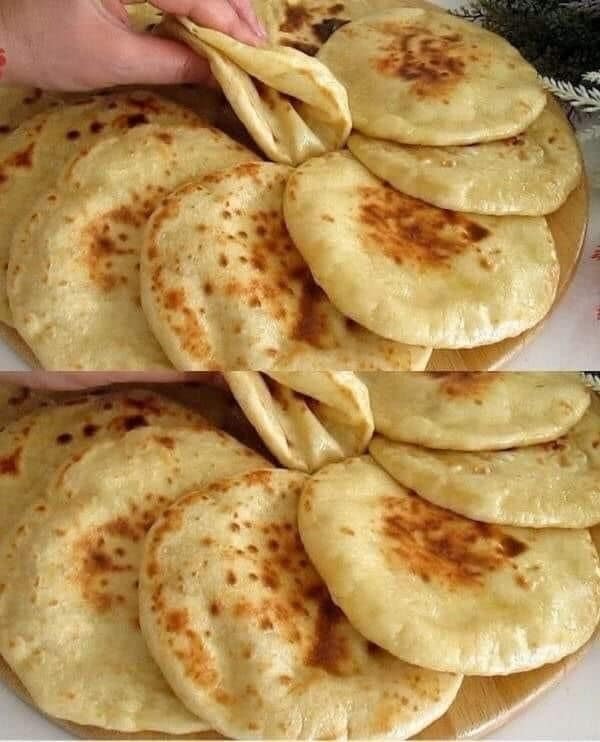ADVERTISEMENT
Quick and Easy No-Oven Bread Recipe: Fresh Homemade Bread in a Flash
Who doesn’t love the smell of fresh-baked bread wafting through the house? Unfortunately, for many of us, the thought of waiting for the dough to rise, kneading, and turning on the oven for an hour or more can be enough to make us give up on the idea of homemade bread entirely. But what if I told you that you could make warm, soft, and fluffy bread in a fraction of the time—with no oven required? Yes, you can!
This Quick and Easy No-Oven Bread recipe is here to save the day. With just a few simple ingredients and a stovetop, you can create a delicious loaf of bread in under an hour. Whether you’re craving a soft, buttery bread to go with dinner or want something to toast for breakfast, this recipe is your new go-to for quick, homemade bread.
Why This No-Oven Bread?
Making bread without an oven might sound unconventional, but it’s actually a game-changer for busy days, small kitchens, or when you simply don’t want to heat up the whole house with an oven. This recipe uses a stovetop method, making it accessible for anyone, no matter their kitchen setup. It’s perfect for beginners, busy home cooks, or anyone who loves the idea of fresh bread without the long wait.
The best part? The bread turns out soft and fluffy, with a slightly crispy crust—just like the kind you’d expect from an oven-baked loaf. Plus, it’s incredibly versatile. You can add your favorite herbs, spices, or seeds to make it truly your own!
Ingredients:
- 2 cups all-purpose flour
- 1 tablespoon baking powder
- 1 teaspoon salt
- 2 tablespoons sugar (optional, for a slightly sweet bread)
- 2 tablespoons olive oil (or melted butter for extra richness)
- 3/4 cup milk (dairy or plant-based)
- 1/4 cup water (you may need a little more, depending on dough consistency)
Instructions:
1. Mix the Dry Ingredients:
Start by combining your dry ingredients in a large mixing bowl. Add the 2 cups of flour, 1 tablespoon of baking powder, 1 teaspoon of salt, and sugar (if using). Stir them together to make sure everything is evenly distributed. The baking powder will help the bread rise, giving it a soft, fluffy texture.
2. Add the Wet Ingredients:
Create a well in the center of the dry ingredients and pour in the olive oil (or melted butter), milk, and water. Stir everything together with a wooden spoon or your hands until a dough starts to form. The dough should be soft but not sticky. If it feels too dry, add a little more water, a tablespoon at a time, until it comes together.
3. Knead the Dough:
Turn the dough out onto a lightly floured surface and knead it gently for about 2-3 minutes. You don’t need to knead it for too long—just enough to bring it together and form a smooth dough. Over-kneading can make the bread dense, so keep it light and quick.
4. Shape the Dough:
Shape the dough into a round or oval loaf, depending on the size of your pan. If you’re making smaller rolls, you can divide the dough into 4-6 pieces and shape them into individual buns.
5. Cook the Bread:
Now comes the stovetop magic. Heat a large, heavy-bottomed pan or skillet over medium heat. If you’re using a round loaf, a cast iron skillet or a wide frying pan works great. Lightly grease the pan with a little bit of butter or oil.
Once the pan is hot, place your shaped dough into the pan. Cover it with a lid and cook for 20-30 minutes, depending on the size of the loaf. You’ll want to cook the bread slowly, allowing it to rise and cook through without burning on the outside. It’s important to keep the heat on low to medium to avoid burning the bottom while ensuring the inside cooks properly.
6. Check for Doneness:
After about 15 minutes, check the bread. If you’re making a round loaf, flip it over carefully using tongs or a spatula. If you’re making smaller rolls, turn them over individually. This helps ensure even cooking on all sides. Let it cook for another 10-15 minutes. You can test if the bread is done by tapping on the top—it should sound hollow. Alternatively, you can insert a toothpick or knife into the center, and it should come out clean.
7. Let it Cool and Serve:
Once the bread is golden brown and cooked through, remove it from the pan and place it on a cooling rack. Allow it to cool for a few minutes before slicing. This bread is best served warm, but you can enjoy it the next day, too.
Variations and Add-ins
Read more on next page
ADVERTISEMENT
